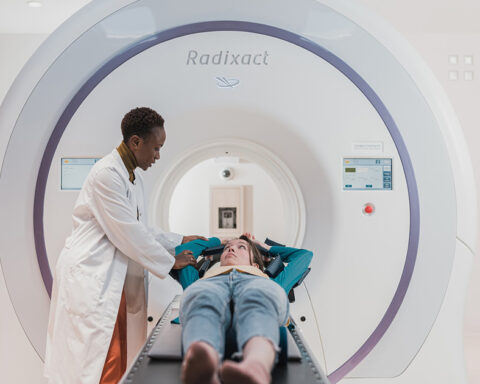Introduction:
Asbestos is a mineral that was widely used in industries such as construction, shipbuilding, and automotive manufacturing due to its resistance to heat, fire, and chemicals. However, the use of asbestos has been linked to a deadly cancer known as mesothelioma. Mesothelioma is a type of cancer that affects the lining of the lungs, heart, and other organs. It is caused by inhaling or ingesting asbestos fibers, which then become embedded in the lining of the organs, causing damage to the cells and eventually leading to the development of cancer.
The Link Between Asbestos and Mesothelioma: Understanding the Connection
What is Asbestos?
Asbestos is a naturally occurring mineral that has been used for its heat-resistant properties in various industries. It is made up of tiny fibers that can easily be inhaled or ingested and become lodged in the lining of organs.
Types of Asbestos
There are six types of asbestos, including chrysotile, amosite, crocidolite, tremolite, anthophyllite, and actinolite. Chrysotile is the most commonly used type of asbestos, accounting for about 95% of all asbestos used in the United States.
How Asbestos is Used
Asbestos was widely used in construction materials such as insulation, roofing, and flooring. It was also used in shipbuilding, automotive manufacturing, and other industries. Although the use of asbestos has declined in recent years, it is still found in many older buildings and products.
What is Mesothelioma?
Mesothelioma is a type of cancer that affects the lining of the lungs, heart, and other organs. It is caused by inhaling or ingesting asbestos fibers, which then become embedded in the lining of the organs, causing damage to the cells and eventually leading to the development of cancer.
Types of Mesothelioma
There are three main types of mesothelioma: pleural, peritoneal, and pericardial. Pleural mesothelioma affects the lining of the lungs, peritoneal mesothelioma affects the lining of the abdomen, and pericardial mesothelioma affects the lining of the heart.
Symptoms of Mesothelioma
The symptoms of mesothelioma can vary depending on the type of cancer and the stage of the disease. Common symptoms include chest pain, shortness of breath, coughing, weight loss, and fatigue.
Diagnosis and Treatment
Diagnosing mesothelioma can be difficult because the symptoms are similar to those of other respiratory illnesses. A biopsy is often needed to confirm the diagnosis. Treatment options include surgery, chemotherapy, and radiation therapy.
The Link Between Asbestos and Mesothelioma
Asbestos exposure is the primary cause of mesothelioma. When asbestos fibers are inhaled or ingested, they become embedded in the lining of organs, causing damage to the cells and eventually leading to the development of cancer. The risk of developing mesothelioma is directly related to the amount of asbestos exposure and the duration of exposure.
Who is at Risk?
Workers in industries such as construction, shipbuilding, and automotive manufacturing are at the highest risk of asbestos exposure. However, anyone who comes into contact with asbestos fibers is at risk, including family members of workers who bring home asbestos fibers on their clothes.
How Does Asbestos Cause Mesothelioma?
When asbestos fibers are inhaled or ingested, they become lodged in the lining of organs, causing damage to the cells. Over time, this damage can lead to the development of cancer. Asbestos fibers can also cause inflammation and scarring, which can increase the risk of developing mesothelioma.
Other Health Risks Associated with Asbestos Exposure
In addition to mesothelioma, asbestos exposure has been linked to other health risks such as lung cancer, asbestosis, and pleural disorders. Asbestosis is a lung disease that causes scarring of the lung tissue and can lead to difficulty breathing. Pleural disorders are conditions that affect the lining of the lungs and can cause chest pain and difficulty breathing.
Prevention of Asbestos Exposure
The best way to prevent asbestos exposure is to avoid working with or around asbestos-containing materials. If you suspect that you may have asbestos in your home or workplace, it is important to have it tested by a professional. If asbestos is found, it should be removed by a trained professional using proper safety procedures.
Protecting Workers
Employers should provide their workers with proper protective equipment and training to reduce the risk of asbestos exposure. Workers should also be provided with regular medical checkups to detect any health problems early on.
Protecting the Environment
Asbestos-containing materials should be properly disposed of to prevent the release of asbestos fibers into the environment. Improper disposal of asbestos can put people and the environment at risk.
FAQs:
Q. Is all asbestos dangerous?
A. Yes, all types of asbestos can cause health problems including mesothelioma and other cancers.
Q. How long does it take for mesothelioma to develop after asbestos exposure?
A. Mesothelioma can take several decades to develop after exposure to asbestos.
Q. Can mesothelioma be cured?
A. There is no cure for mesothelioma, but treatment options are available to manage symptoms and improve quality of life.
Conclusion:
The link between asbestos and mesothelioma is well-established. Asbestos exposure is the primary cause of mesothelioma, a deadly cancer that affects the lining of the lungs, heart, and other organs. It is important to understand the risks associated with asbestos exposure and take proper precautions to prevent exposure. If you suspect that you may have been exposed to asbestos, it is important to speak with your doctor about regular medical checkups to detect any health problems early on.






